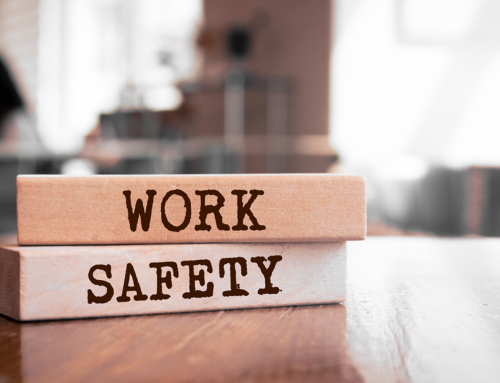Let’s face it: no one looks forward to tackling unsafe behaviour with their workmates. It’s a daunting task. Particularly if you’re the person in charge of it; as Julie Pollard, behavioural safety lead trainer at Fox’s Biscuits, reveals:
“I’ve always thought of myself as outgoing and not scared of anything. But when you’re put in front of colleagues… people you work with everyday, it’s different. You wonder what they think. Your adrenaline’s going… you don’t want to mess up.”
Since 2009, Julie and six other behavioural safety trainers at Fox’s Biscuits have coached over 1200 of their workmates at two sites and brought a 69% reduction in the number of accidents.
Julie also works alongside the people she’s training, some she’s known for over 25 years. And that’s enough to throw anyone’s confidence:
“You’re nervous that they’re thinking ‘What gives you the right to tell us about safety?’”
Gain confidence
So how do you muster courage to train your workmates in the first place? Julie believes it lies in what motivates you:
“I’ll speak up if I think something’s not right, instead of just nudging someone next to you on the arm like we used to do on the production line. One day I just realised: do you know what? I like health and safety because it feels like you’re making a difference.”
Julie thinks it’s a positive attitude to safety that you should share with your workmates by training them.
“People speaking up gives you a good feeling. Like you’re making people’s lives better and safer. Instead of chalking up accidents, you’re hurting less people.”

“What gives you the right to tell us about safety?”
Credibility is your first challenge to overcome if you want to change unsafe behaviour. And the solution lies in your approach, as Julie explains:
“You’ve got to resist the temptation to lecture people. Ask questions to get their answers instead. So it’s ‘you tell us’ not ‘us telling you’.”
When people feel involved they’ll support your cause. It’s the principle behind JOMC’s Lead Trainer course that equipped Julie with her behavioural change skills.
“You’ve got to help people realise that the answers are already in them, and give them a voice.”
So now you’ve got your workmates’ attention. And you keep it with the age-old art of story-telling:
“We share stories about people they know. It makes safety feel more relevant because it shows accidents can and have happened right here on site.”
Why it’s worth being a trainer
The first training session Julie led earned her a gold star from the assessor. And her increased confidence progressed her career at Northern Foods.
But it was congratulations from her colleagues that were the biggest reward:
“People were actually asking ‘when can we come on the course too?’”
That’s not a typical reaction to health and safety training. It’s a sign of success.
Familiarity might make you feel uncomfortable when you’re stood up in front of your workmates, but it actually works to your advantage.
That’s because your audience hears the health and safety message from ‘one of them’. Someone they believe, who really cares that none of them should get hurt.
It makes health and safety training more compelling and culture change more successful. Because like having the confidence to speak up, lasting change comes from within.





